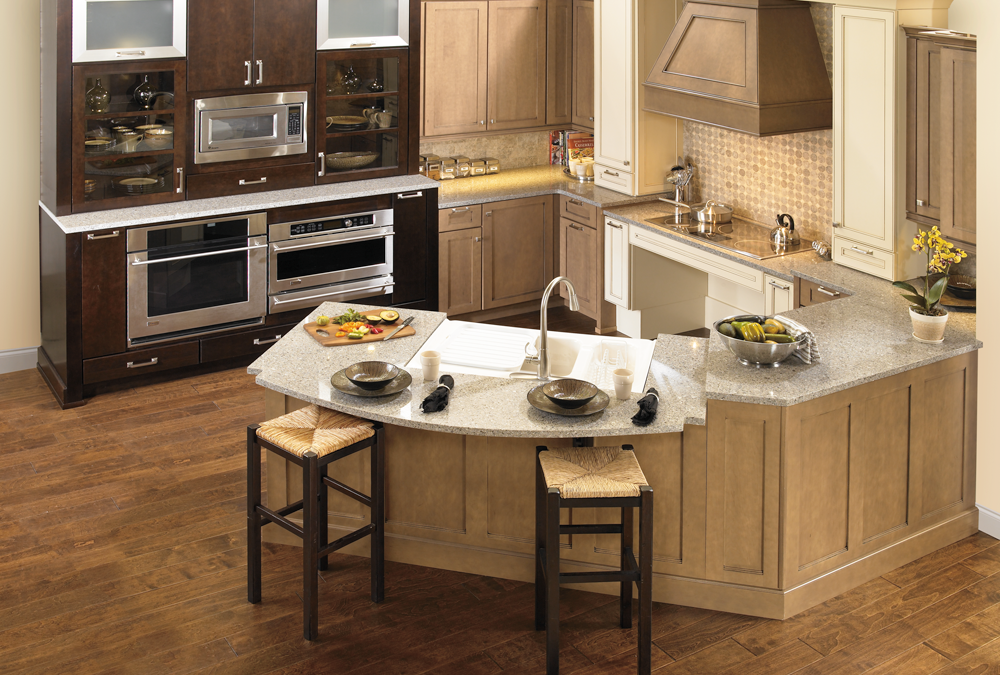Kitchens and bathrooms can be tricky rooms to renovate with the future in mind. These spaces can often be narrow and without some forethought put into their design, they can be difficult to maneuver. Keep these features in mind to adequately prepare these complicated spaces for ease of use as you age.
Storage
Most kitchens contain some sort of raised storage space whether shelving or upper cabinetry. Reaching items placed high-up, especially heavy items placed overhead, can present a challenge as we age. Consider moving all or often-used items into low cabinets and drawers. Drawers are easier to handle as they pull out into what is hopefully a well-lit space and do not involve crouching and reaching.
Appliances
Along with moving items to below counter level, the same can be done with appliances. Changing from a counter or shelf microwave to a microwave drawer can provide easier access to this often-used appliance. Likewise, changing to a wall oven can be helpful as they are more accessible for those in wheelchairs and eliminate much of the bending and lifting required with a traditional oven.
Faucets
With arthritis a real possibility for many of us in our advanced age, maneuvering knobs can present a problem. Consider a touch-on, touch-off or no-touch faucet for your kitchen and bathroom sinks instead. These are also more hygienic and can slow the spread of dangerous germs throughout your home.
Sinks
Sinks are a feature of both kitchens and bathrooms which we all need equal access to, regardless of our level of physical ability. In kitchens, opting for a shallow sink with a removable or adjustable front cabinet panel will allow access for those in wheelchairs, allowing them to maneuver directly up to and under the sink. Likewise, a wall-mounted sink in the bathroom allows similar space for access.
Bathroom
Of course, ideally in a space designed for seniors, a bathroom (or at least a half-bath) would be installed on the ground level of the home. As our eyesight decreases, stairs can pose a real tripping hazard.
Shower
Two features can make a standard shower much safer for seniors. First, there should be barrier-free entry into the shower. Climbing into a tub can be hazardous and a barrier-free or low threshold shower is best. Second, installing grab bars helps improve stability. If the bars are not yet necessary, at a minimum, installing wood blocking behind the shower so that bars may be installed at a later time is a wise choice.
Toilet seat
Finally, our joints get worse, not better as we age. One thing we can do to improve the toll bending takes on our knees and back is to invest in a raised toilet seat. This feature also serves anyone who either temporarily or permanently finds themselves wheelchair-bound.
Visit your local Fairview to speak with an experienced designer and schedule your FREE in-home design consultation today. Learn about general aging-in-place tips for the rest of your home [here].




